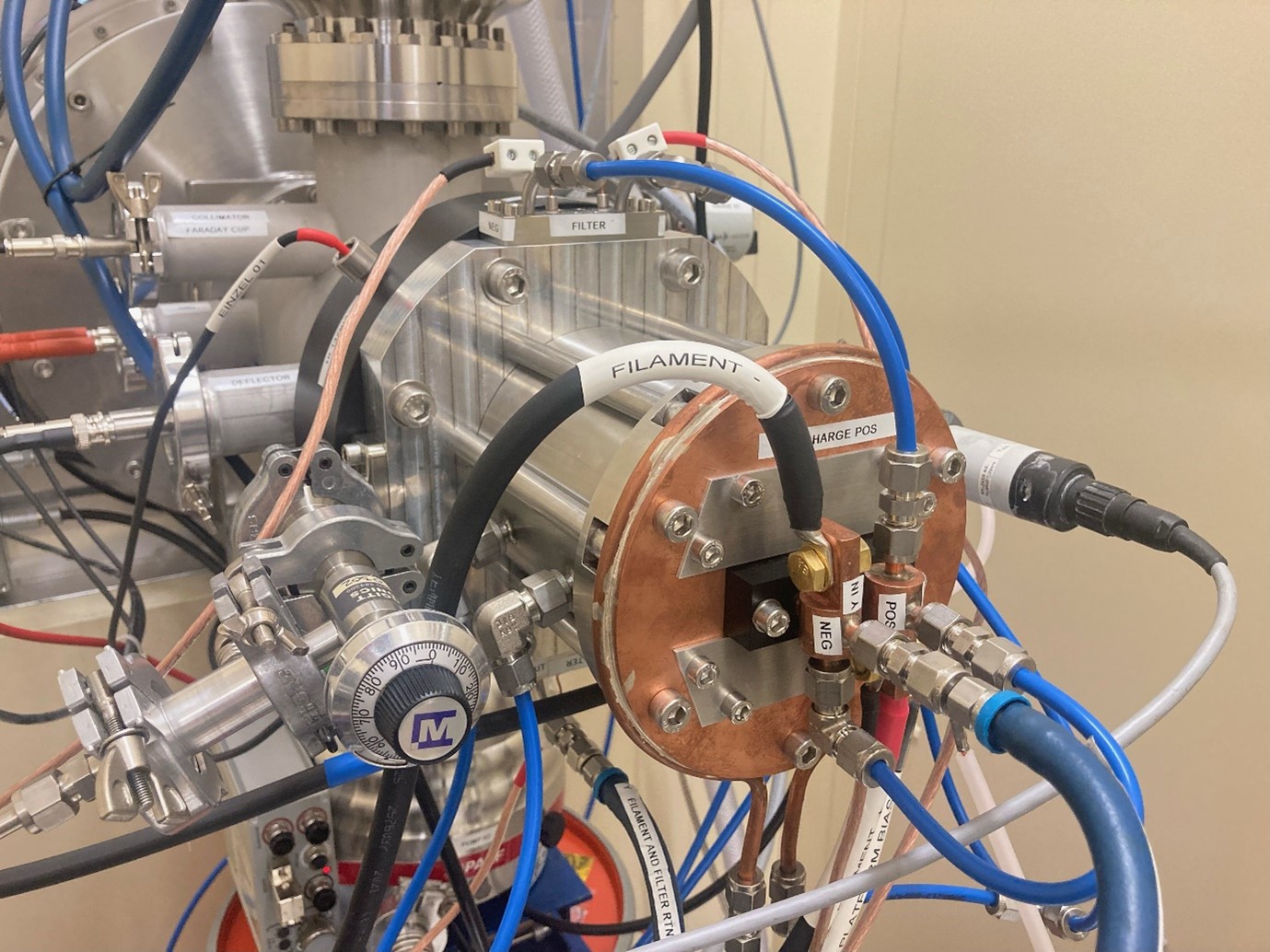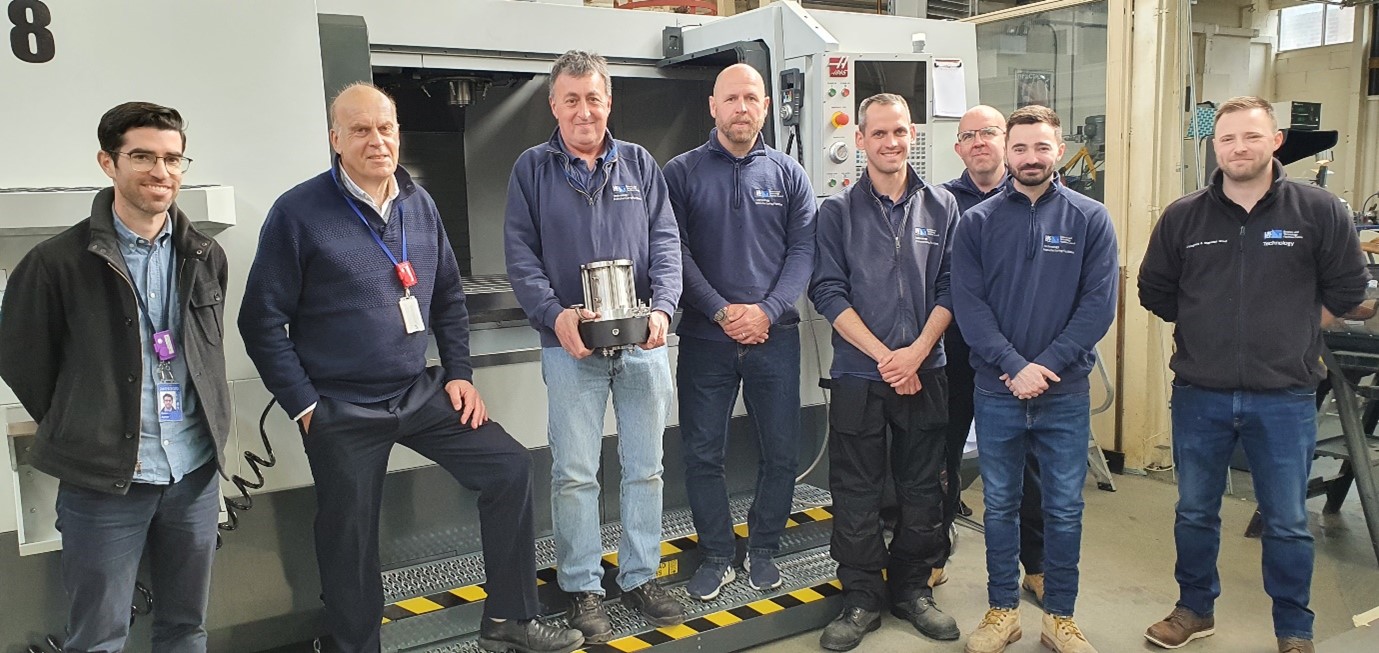The ALPHA experiment at CERN aims to make enough antimatter to study its physical properties and compare its behaviour to ordinary matter. This will allow fundamental questions about the universe to be answered such as: does antimatter fall up or down?
The ALPHA experiment has so far only made around 75,000 anti-hydrogen atoms in total over the past decade. When you consider Avogadro's number (6x1023) which is the number of atoms in 1 g of hydrogen, the amount of anti-hydrogen so far produced is absolutely miniscule.
Making antimatter is not easy, as it requires antiprotons and anti-electrons (also called positrons) to be carefully brought together in electromagnetic traps to make anti-hydrogen atoms. If any antimatter touches the walls of the chamber it is immediately annihilated.
The antiprotons are delivered to the ALPHA experiment on a strict timetable. They are produced elsewhere in the CERN accelerator complex by firing a high energy beam of protons at a target. Then they are captured, accumulated and decelerated before being sent to the ALPHA experiment.
The difficulty of creating and handling antiprotons makes it very hard to perfect the trapping in the ALPHA experiment. By practicing with a harmless equivalent (H-minus ions) the ALPHA experimenters will be able to optimise the traps and create more antimatter.
With an almost identical mass, and the same negative charge as an antiproton, H-minus ions will behave in exactly the same way as antiprotons when they are steered into the traps.
 The ALPHA experiment deputy spokesman Will Bertsche from Manchester University approached the ISIS Low Energy Beams Group (LEBG) for help in making a beam of H-minus ions. By happy coincidence, the ISIS LEBG was already planning to build a very fine (low emittance) H-minus ion source as a diagnostic beam for the Front End Test Stand (FETS) accelerator at RAL, so the CERN ALPHA request was easily fulfilled by making an additional copy of the ion source.
The ALPHA experiment deputy spokesman Will Bertsche from Manchester University approached the ISIS Low Energy Beams Group (LEBG) for help in making a beam of H-minus ions. By happy coincidence, the ISIS LEBG was already planning to build a very fine (low emittance) H-minus ion source as a diagnostic beam for the Front End Test Stand (FETS) accelerator at RAL, so the CERN ALPHA request was easily fulfilled by making an additional copy of the ion source.
The RAL team took an ion source design from the University of Jyväskylä in Finland and designed a deceleration and differential pumping chamber to create the beam required for the ALPHA experiment. The deceleration and differential pumping chamber was mechanically designed by University of Castilla-La Mancha in Spain. The components for the ion source were manufactured in the Technology Department's workshops at RAL.
The ion source (pictured above right) was successfully assembled and tested at RAL by members of the ISIS LEBG. By swapping the polarity of the high voltage power supplies, the ion source also made beams of protons, making this a very versatile diagnostic ion source.
Dan Faircloth, ISIS LEBG Leader said, “This is a wonderful example of how the expertise at RAL can deliver unique scientific hardware: The UKRI Legal and Commercial team got us permission to use a Finnish design; the ISIS Design Division transferred the Finnish drawings into manufacturing drawings; the Technology Department's Manufacturing Facilities Group manufactured all the ion source components on site; the ISIS LEBG designed, assembled and tested the system."

Members of the ISIS Design Division and the Technology Department's Manufacturing Facilities Group who manufactured the ion source. From left: Galen Aymar, Colin Offer, Graeme Pryce, Jason Champion, James Carter, Richard Wadiun and Oliver Campbell.
